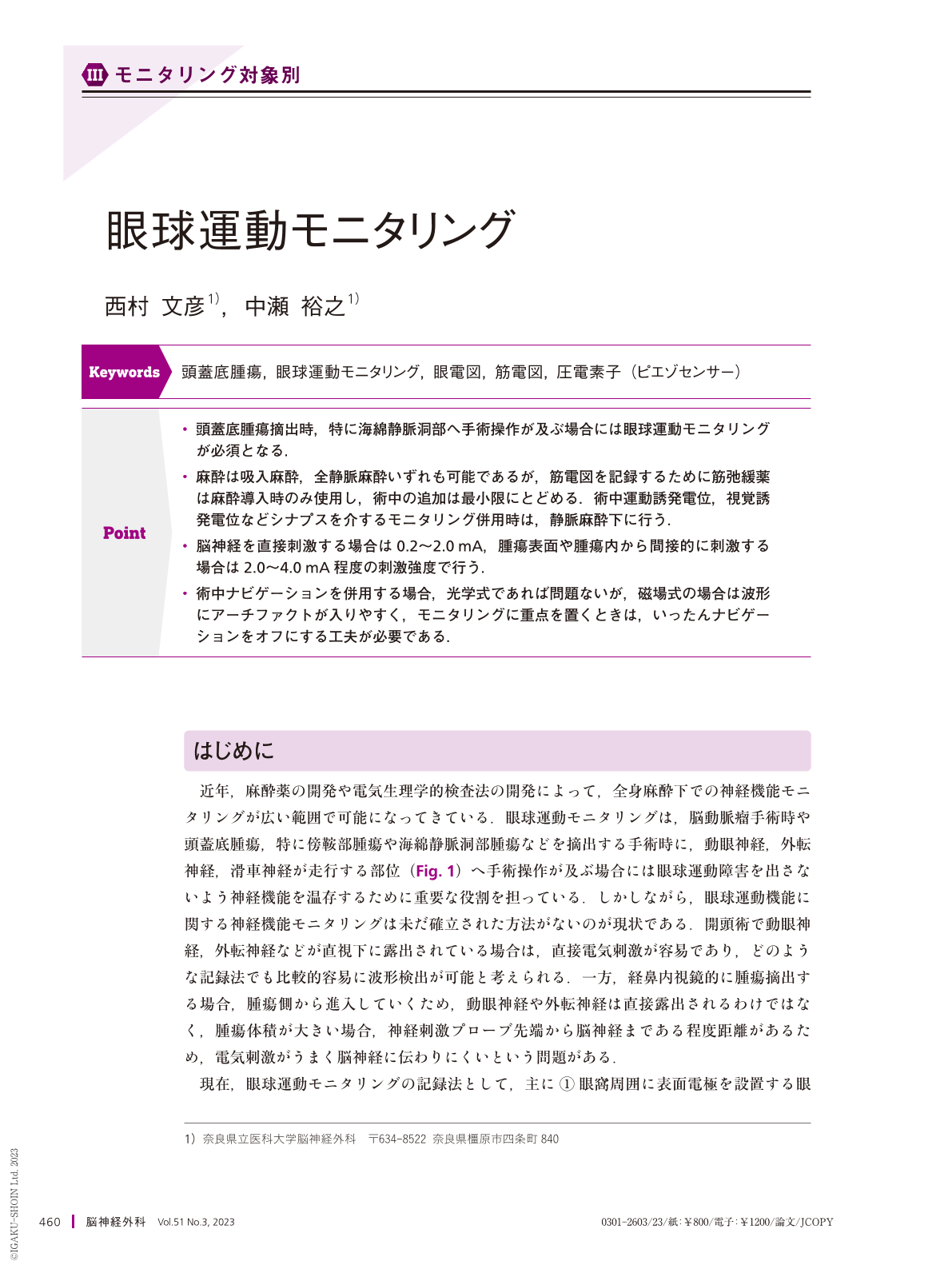Japanese
English
- 有料閲覧
- Abstract 文献概要
- 1ページ目 Look Inside
- 参考文献 Reference
Point
・頭蓋底腫瘍摘出時,特に海綿静脈洞部へ手術操作が及ぶ場合には眼球運動モニタリングが必須となる.
・麻酔は吸入麻酔,全静脈麻酔いずれも可能であるが,筋電図を記録するために筋弛緩薬は麻酔導入時のみ使用し,術中の追加は最小限にとどめる.術中運動誘発電位,視覚誘発電位などシナプスを介するモニタリング併用時は,静脈麻酔下に行う.
・脳神経を直接刺激する場合は0.2〜2.0 mA,腫瘍表面や腫瘍内から間接的に刺激する場合は2.0〜4.0 mA程度の刺激強度で行う.
・術中ナビゲーションを併用する場合,光学式であれば問題ないが,磁場式の場合は波形にアーチファクトが入りやすく,モニタリングに重点を置くときは,いったんナビゲーションをオフにする工夫が必要である.
*本論文中、[Video]マークのある図につきましては、関連する動画を見ることができます(公開期間:2026年6月まで)。
The intraoperative monitoring of extraocular motor nerves allows optimal skull base surgery by protecting the cranial nerves. For detecting cranial nerve function, several methods, such as external ocular movement monitoring with an electrooculogram(EOG), electromyogram(EMG), and piezoelectric device sensors, are present. While being valuable and useful, several problems related to its accurate monitoring persist when scanning from inside the tumor, which might be far from the cranial nerves.
Here, we described three modalities, free-run EOG monitoring, trigger EMG monitoring, and piezoelectric sensor monitoring for monitoring external ocular movement. Improvement of these processes is essential for appropriately conducting these procedures during neurosurgical operations without harming the extraocular motor nerves.

Copyright © 2023, Igaku-Shoin Ltd. All rights reserved.


